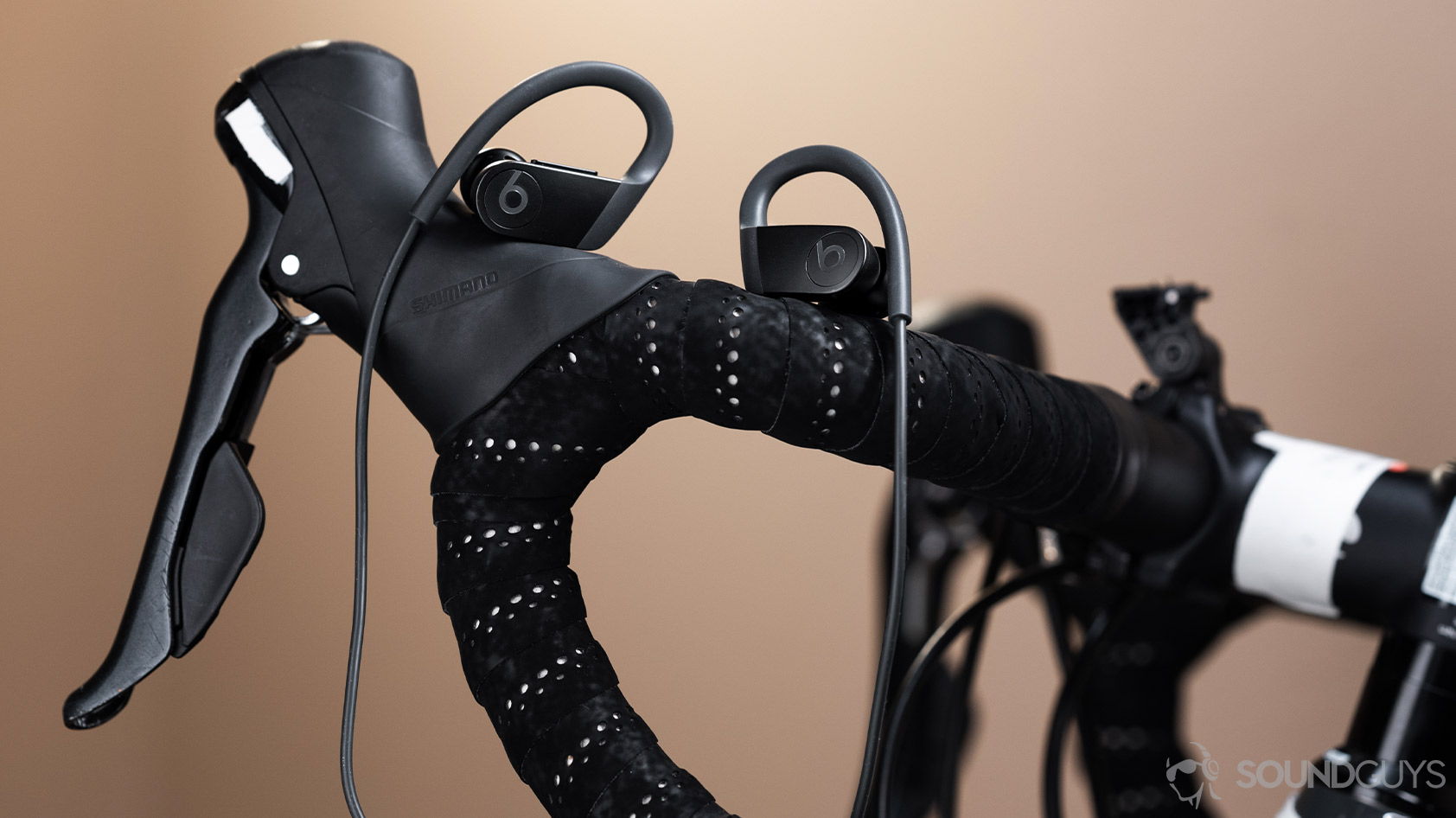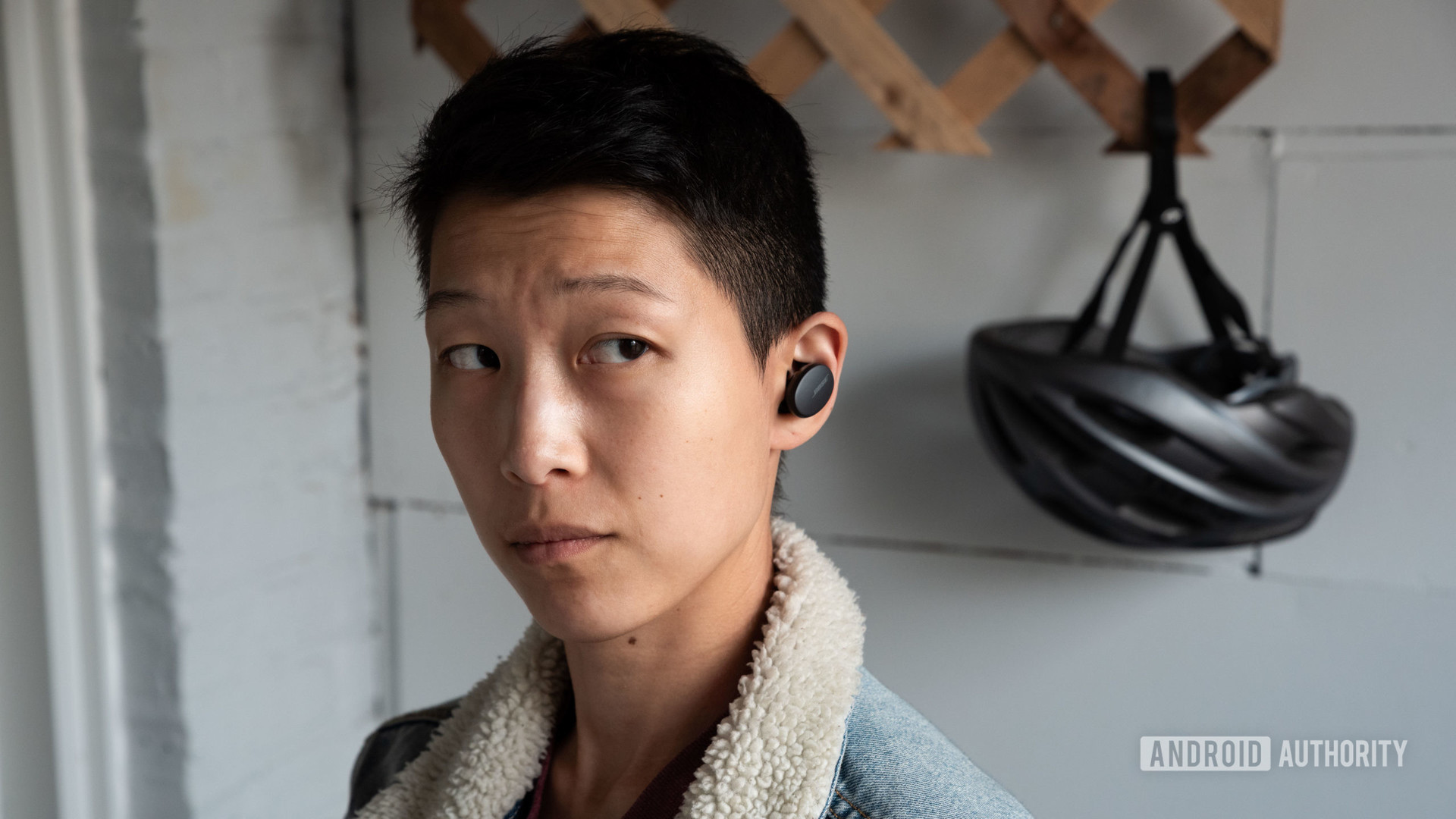Earbuds that don’t fall out should be the norm, not the exception
Chase Bernath / Android Authority
Roger Fingas
There’s a good chance that if you’re buying a smartphone in 2021, you might have true wireless earbuds to go with them. Apple’s AirPods have been phenomenally successful, so much so that Sony, Samsung, and even audiophile companies like Klipsch have felt pressured to follow suit. The benefits to going fully wireless are obvious, namely compact size, fewer tangles, and no need to plug anything in except for charging (unless you’ve got a wireless charging case). Yet for all this competition, many manufacturers are failing to deal with a recurring problem: keeping buds in a person’s ears.
AirPods illustrate the problem better than most, somewhat ironically given their popularity. The basic model ships in a tipless, one-size-fits-all format that seems to fit many ears, but not all. Even when they’re relatively snug, AirPods are infamously easy to knock out if, say, someone jostles you on the train. That also makes them especially bad for exercise. You’ll occasionally see people wearing them during running or weightlifting, but they’re one accident away from getting lost, never mind holding on during movements like hanging crunches.
Let’s not single out Apple, however. Similar problems exist with the majority of earbuds, whether they’re as cheap as the Soundcore Liberty Air 2 or as expensive as Sony’s WF-1000XM4. Many companies have made the wise decision to include multiple sizes of rubber tips, which create better grip. Yet these still aren’t good enough in some instances, especially for people who can’t afford to replace $100-300 accessories on a whim.
How do some wireless earbuds address the fit problem?

The only surefire way to keep anything in place is a hook. Even if your buds pop out, with hooks, they’ll just dangle on your ears until you can shove them back in. For fitness enthusiasts, this makes the Beats Powerbeats not just one of the better choices, but practically de facto for activities like climbing or those hanging crunches. They’re also highly recommended if you’re going to make them your primary headphones, and can’t risk losing anything. Shoppers on a budget meanwhile might want to consider JBL’s Endurance Peak II, which sacrifice in areas like battery life and Apple ecosystem integration but are also a heck of a lot cheaper.
The next best alternatives to hooks are fins, which anchor on the inside folds of the ear instead of outside. These are less reliable but sleeker, and certainly better than nothing. There are also more high-quality options out there. A couple of leading examples are Jaybird’s Vista 2 and Bose’s Sport Earbuds. In practice, fins tend to be excellent for all but the riskiest activities.
See also: The best true wireless workout earbuds you can buy
A minimalist solution involves changing tip material from rubber to foam. Foam can conform to just about any ear shape, providing not just a secure fit but a tighter audio seal. This may however be uncomfortable for some wearers, and the majority of buds don’t ship with it. Aficionados tend to pick up Comply’s third-party tips, which are engineered for all the popular brands. Regardless, foam tips tend to degrade faster, which can potentially be a non-starter.
Recently companies like Apple, Amazon, and Sony have been experimenting with a software solution: tip fit tests. However, these are mostly geared toward improving sound quality and isolation, and may not do much of anything to help buds grip better.
Why earbud makers haven’t fixed pop-outs

Lily Katz / Android Authority
The main reason hooks and fins haven’t become universal is simple: aesthetics. The added bulk can draw attention, at least outside of the gym. Indeed such buds often deliberately scream “fitness,” which can conflict with a person’s fashion sense unless they’re into the athleisure look. On top of this tech companies are often obsessed with achieving the slickest look possible, practicality be damned. This is probably why there are hooks on Powerbeats models, but not AirPods — Beats headphones are already designed to be conspicuous, so it doesn’t matter how much they jut out. The signature AirPods “stems” are smaller on the AirPods Pro, and may shrink or disappear completely with the AirPods Pro 2 if rumors are to be believed.
The main reason hooks and fins haven’t become universal is simple: aesthetics.
There are other, more legitimately useful reasons companies might sacrifice a secure fit. Adding hooks tends to demand a bigger charging case — the most infamous example being the Powerbeats Pro, which not only have comically large clamshells, but ask owners to slot the buds in at odd angles. Hooks and fins alike can cause problems with glasses and face masks, sometimes pulling them off when a person is trying to remove a bud. Foam, lastly, is more likely to retain sweat, which is both a danger to electronics and hygienically nasty if it’s not cleaned.
Where the wireless earbud industry goes from here
Companies will have to offer a more consistent fit, one way or another, if wireless buds are going to become universal. Aesthetics may have to adapt. It’s arguable in fact that products like the Powerbeats Pro and Jaybird Vista 2 are already pretty attractive, they’re simply not what people are used to. It should be easier to achieve slick designs as chip and battery technologies evolve, enabling powerful hardware in slimmer packages.
It could be that the solution is better ergonomics overall. Certainly, brands like Google and Samsung have gradually realized that perfectly round buds don’t match human anatomy. By continuing down this path, and perhaps adding higher-friction tips, we might get to a place where hooks and fins will be needed only by athletes — rather than people sick of their buds popping out for the second time in a day, which a $200+ product shouldn’t do.
For all the latest Technology News Click Here
For the latest news and updates, follow us on Google News.
